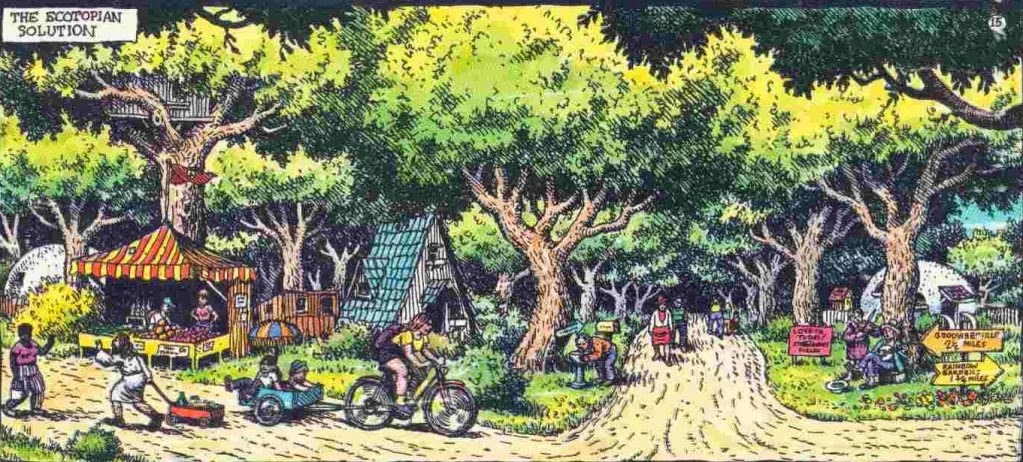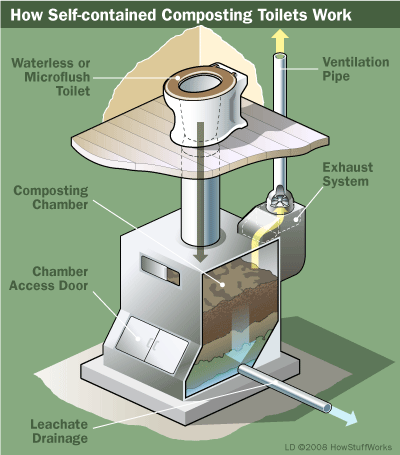Once I felt we could reform the tax system to make it fair, to make it work. Yes, I said to the hangman, would you mind putting a bit of padding on the noose? Just there where it rubs my neck. And I'd really prefer the rope to be a nice stretchy bungee cord if you please..
This elephant was not so lucky. They train them as babies with chains around the legs to prevent escaping. Funny thing is, when the elephant is fully grown, it respects the chains. However, it could easily break them! This is called learned helplessness, and it must begin at an early age to be effective. The baby is powerless -- the adult is not -- the adult remembers powerlessness and perpetuates it unknowingly. Unwillingly we might say. Permission was not given to hobble us.
Death and taxes we are taught may not be avoided.
We can't all be rogue elephants running amok can we? Yet there's a place in nature for instinct -- it is only when this is inhibited that a creature becomes docile and dependent on its handlers. We are that elephant. (And some of us are the grown-up versions of it.)
There was an exercise that I tried (a thought experiment if you like). Remember John Nash, the protagonist of A Beautiful Mind? He has used [invented] game theory to explain people's economic behaviour and explain why a phenomenon such as cooperation might be economically viable.
If people can make the calculation for themselves, it goes like this. By doing my part to work with a team (a group, a co-op, a state, a village or a country) everyone can benefit equally -- including me!
If I act selfishly or against the natural limits (rules) of the situation (game), I will lose, and others will not benefit as fully either.
(See the oft-cited prisoners' dilemma, and the tragedy of the commons, examples of sharing and cooperation that require us to transcend the prospect of immediate benefit to ourselves alone..)
Here's my work of many years ago, after studying Biology,
where grids like this are used to explain species-species interactions.
(In which +/- is parasitism, +/+ is symbiosis for example.)
where grids like this are used to explain species-species interactions.
(In which +/- is parasitism, +/+ is symbiosis for example.)
This would be an analysis of human ecology.
Where individual actions are weighed alongside their impact on society.
At the time I was thinking of how the tax system could be improved.
Where individual actions are weighed alongside their impact on society.
At the time I was thinking of how the tax system could be improved.
There are terms such as grant and reverse grant to describe
whether society gives something
to the person as a result of what they do,
or the person is required to give something of theirs back.
whether society gives something
to the person as a result of what they do,
or the person is required to give something of theirs back.
The grids with zero have special notes (*) on the reasoning there.
Elements of a Just Society
Game theory grid
|
+ TO SELF
|
- TO SELF
|
0 TO SELF
|
+ TO SOCIETY
|
I
|
II
|
III *
|
- TO SOCIETY
|
IV
|
V
|
VI *
|
0 TO SOCIETY
|
VII *
|
VII *
|
IX *
|
Key:
1. Self - Individual does or gives
2.
Society Gets
3.
Society Gives
4.
Individual receives
A. TYPE OF TRANSACTION
B. TYPE OF GRANT OR REVERSE GRANT
---------------------------------------------
I. PLUS TO
SELF, PLUS TO OTHERS
1. Runs
ethical business
2.
Services provided
3. Bonus
paid
4.
Profit
A.
WIN-WIN
B. BONUS
II. MINUS
TO SELF, PLUS TO OTHERS
1.
Enforced contribution to public works
2.
Enrichment
3.
Entitlement
4. Living
Expenses
A. DRAFT
B.
ALLOWANCE
III. "NOUGHT" TO SELF, PLUS TO OTHERS
( * VOLUNTEER- NOTE: Benefit
and cost to individual are roughly equal)
1.
Voluntary Work
2.
Necessary Services
3.
Approval to work
4.
Satisfaction Experienced
A.
VOLUNTARY WORK
B. WORK
EXPERIENCE
IV. PLUS
TO SELF, MINUS TO OTHER
1. User Fees at Market Value
2.
Revenue [Compensation]
3.
Public Resource Access
4.
Public Resources
A.
RESOURCE USE
B.
RENTAL FEES
V. MINUS
TO SELF, MINUS TO OTHERS
1.
Environmentally/ Socially Undesirable Act
2. Fines
Paid
3. Help
("Coaching" preferably)
4.
Institutionalization
A. CRIME
B. TIME
/ FINE
VI.
"NOUGHT" TO SELF, MINUS TO SOCIETY
(* SERVICES- NOTE: Benefits
every one equally, no unique benefit to ONE individual )
1. Pays
citizenship dues
2.
Public Monies
3.
Provides Basic Service at Social Level
4.
Services, Infrastructure
A. PUBLIC
SERVICES
B. DUES
VII. PLUS
TO SELF, "NOUGHT" TO SOCIETY
(* LUXURY- NOTE: Benefits one
individual over another with no net effect on society)
1. Pays Privilege Tax
2.
Levies Paid
3. Right
to Privilege
4.
Luxury
A.
PRIVILEGE
B.
LUXURY TAX
VIII. MINUS TO SELF, "NOUGHT" TO SOCIETY
(* DONATION- NOTE: Not
strictly needed by society, given, nonetheless)
1.
Special donations
2. Extra
goods and/or services
3.
Recognition
4. Merit
Award
A.
DONATION
B. MERIT
IX. "NOUGHT" TO SELF, "NOUGHT" TO SOCIETY
(* RANDOM ACT OF KINDNESS-
NOTE: Benefit and cost cancel out from one individual to another
Neutral effect on society- financially speaking! )
1. One
individual helps another individual
2. No
net material benefit
3. May
not know of above transaction
4. Good
Karma
A.
RANDOM ACT OF KINDNESS
B.
BLESSING
............................................................
What I am saying is the economy revolves not just around everyone having money, but on people being willing to get out of bed in the morning to do things that will (ultimately) benefit others. (Look what happens when there is a general strike [rubbish piles up]).
How does this have any bearing on debt and taxation? Our game [in the world today] involves taking on debt to lift ourselves up by our boot-straps. We have not what we need, some one else does. They give it conditionally.
What is missing is freedom. Our freedom to manifest that which we need or desire, free from encumbrance. We [used to] submit to a form of punishment (debt burden) when we [strove] to uplift ourselves materially.
Yet the source of everything is equally available to all -- every material object we own [or ever may] traces its origin to the earth. {Ultimately -- the earth belongs to all.}
And the energy -- life force -- which allows us to get out of bed to work, to play, to manifest flows through each of us, or we would not be alive.
The games which differentially advantage some over others (who's on top of the pyramid economically?) are of our own making. This is the way it is, we teach the baby elephant; and the human adult remembers.
Taxation, too, is a disincentive. A penalty. (In the grid above, when padding the noose, I only described a Luxury Tax - like in Monopoly! - see VII. The other disincentives were IV, a user-pays fee for public resources, and V a fine for socially/environmentally unacceptable actions. VI was a levy for public works..)
Things that are taxed become limited, as to do more of them incurs a cost (unless you've made a loophole for it -- game!). So why tax our productivity -- our income? Does this not send the message that it should be curtailed -- you work more, you earn more, so you pay more.
I believe the income tax really does limit some people in this way. Too bad. Work and productive behaviour could/should/would be a joy if left untaxed and unsullied by onerous obligation and economic necessity.
I believe the income tax really does limit some people in this way. Too bad. Work and productive behaviour could/should/would be a joy if left untaxed and unsullied by onerous obligation and economic necessity.
Here I am saying that to be truly free, everything we do must be voluntary! There never was or will be a tax on what we do from the goodness of our own hearts. Often this has been stated as "The best things in life are free." And they are. Tax is not one of those things. (Nor is debt.)
Imagine an economy like this. What if no one was paid to collect rubbish. Quickly people would see what must be done. Some might even say, "I don't think we should have rubbish." Or, "I can't really afford to have rubbish in my life." Problemo solved.
Other necessary functions would engender empowerment -- as I've discussed in previous posts [local self determination and a house of your own]. Now we start to see how it all fits together.
It really is medieval (in the gruesome, violent, oppressive sense of the word) to extract involuntary tribute from any one. Armies have done this to cities. Nobles have done this to peasants. And Kings and Emperors have done this to so-called nobles. We still do it -- with our tax systems, with Third World debt.
What is given should only be given freely -- that's my motto. Giving things feels so good! I prefer that some one who receives from me does not feel beholden in any way. I would not wish them to feel indebted or to owe me anything. Because if I did not want them to have that thing, I would not freely have given it.
More on economics. We have a commonly held belief that to be prosperous one must accumulate vast amounts of resources -- stuff, money, or even livestock or stores of food. But what if wealth came to be measured in a different way.
........................................
A further consideration in relation to taxes (the elephant in the lounge room?) -- they violate the principle of individual sovereignty [I am sovereign, I am free, I am sovereign of me.]. (Quote from Cameron Day)
It really is medieval (in the gruesome, violent, oppressive sense of the word) to extract involuntary tribute from any one. Armies have done this to cities. Nobles have done this to peasants. And Kings and Emperors have done this to so-called nobles. We still do it -- with our tax systems, with Third World debt.
What is given should only be given freely -- that's my motto. Giving things feels so good! I prefer that some one who receives from me does not feel beholden in any way. I would not wish them to feel indebted or to owe me anything. Because if I did not want them to have that thing, I would not freely have given it.
Wealth loves company.
More on economics. We have a commonly held belief that to be prosperous one must accumulate vast amounts of resources -- stuff, money, or even livestock or stores of food. But what if wealth came to be measured in a different way.
One is wealthy in proportion to what one is able to circulate to others (as above, different types of resources). That is, how much can one give to other people --
not how much can one get for one's self.
I leave you with this thought.
~

.jpg)



























































